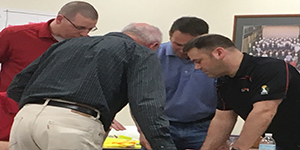Scientific Method is the systematic observation, measurement, experimentation, formulation, testing, and modification of hypotheses. Hypotheses are a supposition or proposed explanation made on the basis of limited evidence as a starting point for further investigation.
Improvement Kata is the repeated practicing a pattern to learn a skill or way of thinking, to become second nature, with little conscious effort.
The Scientific Method is the basis for the Deming Cycle (Shewhart) also known as Plan-Do-Check-Act.
- Question
- Hypothesis
- Prediction
- Testing
- Analysis
- Modify hypothesis, or Conclusion
Kata examples include: swimming, riding a bicycle, driving a car. Mastery through repetition. We can do these things without thinking about them. For lean management, building this automatic habit comes from repetition of …
- Understand the Direction (next challenge, goal, target condition)
- Grasp the Current Condition, and Obstacles
- Establish the Next Step (next target condition)
- Go See what we have learned
- Rinse and repeat

A Target Condition is an interim goal on the way to the Challenge, described in greater detail than the Challenge. It usually takes several successive target conditions to reach a Challenge, so it is sometimes called the “Next Target Condition.”
A Target Condition only describes where you want to be next, not how to get there. That will be figured out through experimenting in the next step of the improvement kata pattern.
A Target Condition describes a desired future set of circumstances that lie beyond our current knowledge threshold. We donʼt yet know how we will get there.
A Target Condition has a specified achieve-by date, which is often between 1 week and 3 months out. Longer than that is often ineffective and should generally be broken down to smaller Target-Condition increments.
